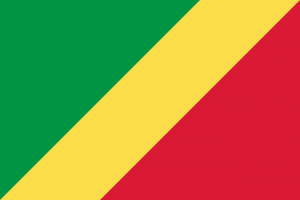Language/Lingala/Grammar/The-subjunctive
Yes, Lingala has a subjunctive form, but it’s a bit limited compared with a lot of other languages.
The subjunctive is commonly restricted to just three main verbs – kolinga (to want or to like or love), kozela (to wait for), and kosengela (to need). And then it is used in conjunction with a second verb whose conjugation is slightly modified.
In many ways, the construction is similar to the future tense construction, with a conjugated first verb and the infinitive form of a second. For example, ‘I am going to buy’. Using the standard form, this would be nakei (I am going) + kosomba (to buy).
But with the subjunctive form, this changes slightly to ‘I want to buy’. To construct this, first conjugate the verb kolinga (to want):
- nalingi – I want
- olingi – you want
- alingi – he/she wants
- tolingi – we want
- bolingi – you want (plural)
- balingi – they want
- elingi – it wants
Next, create the subjunctive form you want to use, in this case, kosomba.
To create the subjunctive form, drop the ‘ko-‘ at the beginning, but keep the ‘- a’ at the end. Then add the appropriate subject pronoun. So this becomes:
- na+somba – nasomba
- o+somba – osomba
- a+somba – asomba
- to+somba – tosomba
- bo+somba – bosomba
- ba+somba – basomba
Now combine the two to make the complete form:
- nalingi nasomba – I would like to buy
- olingi osomba – you would like to buy
- alingi asomba – he/she would like to buy
- tolingi tosomba – we would like to buy
- bolingi bosomba – you would like to buy (plural)
- balingi basomba – they would like to buy
- elingi esomba – it would like to buy
And it will be the same for the other verbs. Here’s another example using komona (to see):
- nalingi namona – I would like to see
- olingi omona – You would like to see
- alingi amona – he/she would like to see
- tolingi tomona – we would like to see
- bolingi bomona – you would like to see (plural)
- baling bamona – they would like to see
- elingi emona – it would like to see
The same approach is used when using kozela (to take) as the primary verb, in this case paired with kozua (to take)
- nazeli nazua – I wait to take
- ozeli ozua – you wait to take
- azeli azua – he/she waits to take
- tozeli tozua – we wait to take
- bozeli bozua – you wait to take (plural)
- bazeli bazua – they wait to take
- ezeli ezua – it waits to take
And for kosengela (to need) as the primary verb, here paired with kosala (to work):
- nasengeli nasala – I need to work
- osengeli osala – you need to work
- asengeli asala – he/she needs to work
- tosengeli tosala – we need to work
- bosengeli bosala – you need to work (plural)
- basengeli basala – they need to work
- esengeli esala – it needs to work
Once you've mastered this lesson, take a look at these related pages: Present Tense, Verb to be, The Future Tense To Be & Past progressive tense.
Source[edit | edit source]
https://lobalingala.files.wordpress.com/2014/07/23042014-loba-lingala.pdf
Other Lessons[edit | edit source]
- Conjugation To Have
- The first 10 words
- The First 10 Verbs
- The Past Tense To Be
- Create simple sentences in the negative
- Questions
- Using infinitive verb forms
- Simple present tense
- Create your first simple sentences in the affirmative
- Plurals
- Past progressive tense
- Irregular verbs – kokende – to go
- Subject pronouns
- Negation

